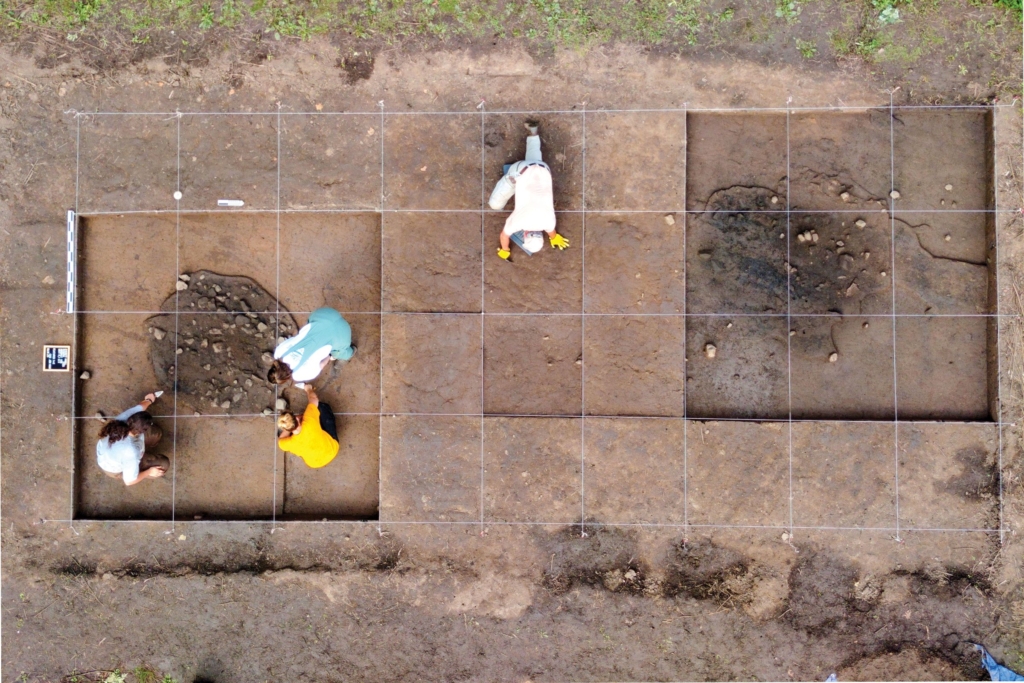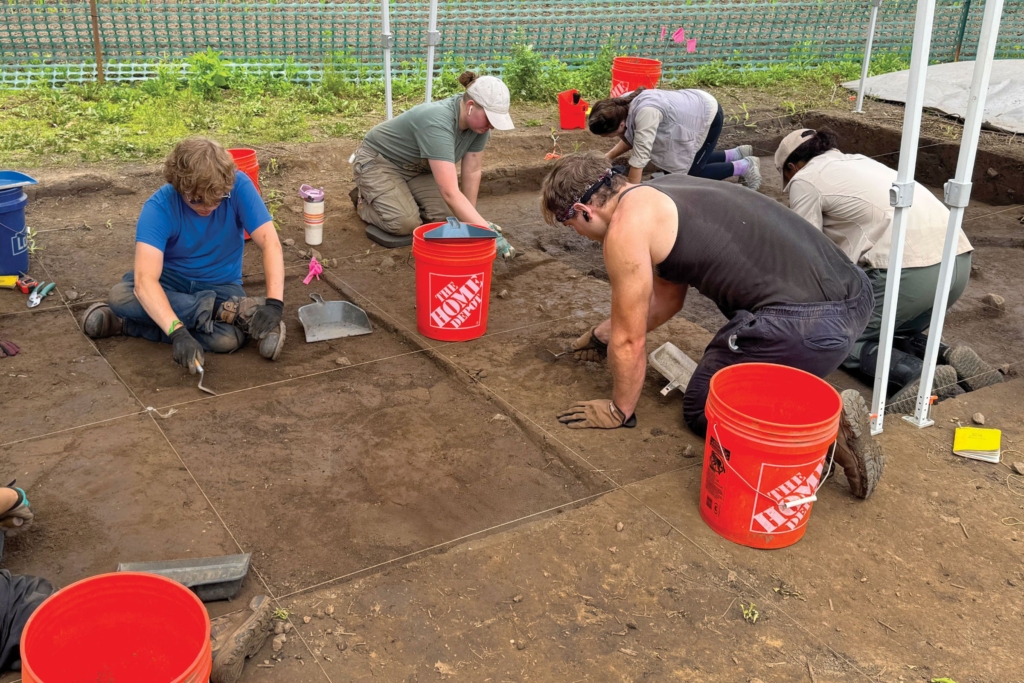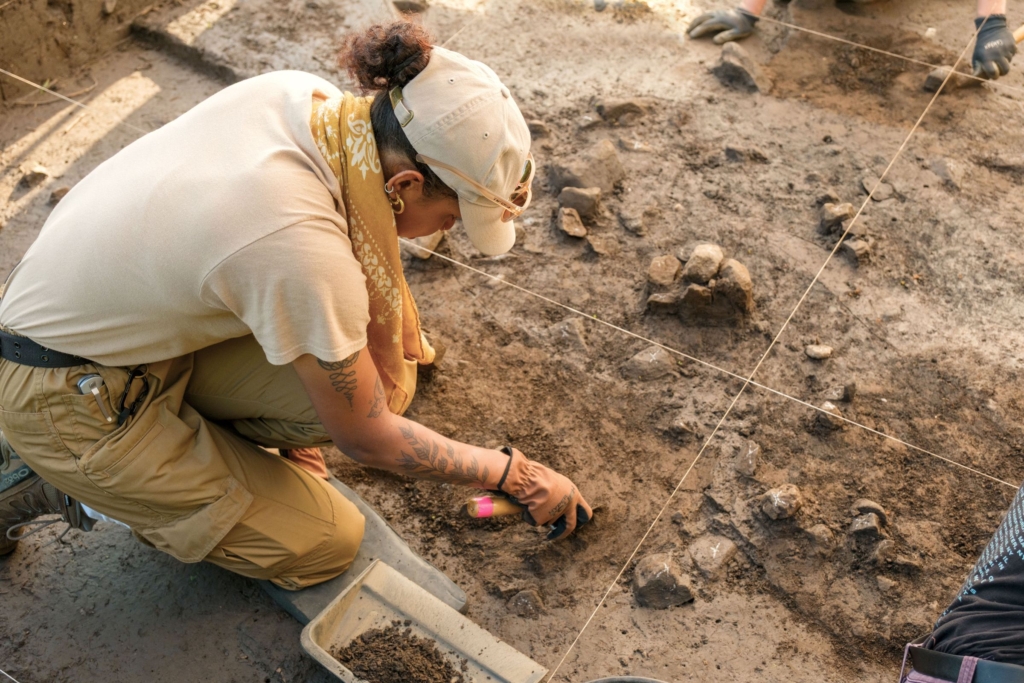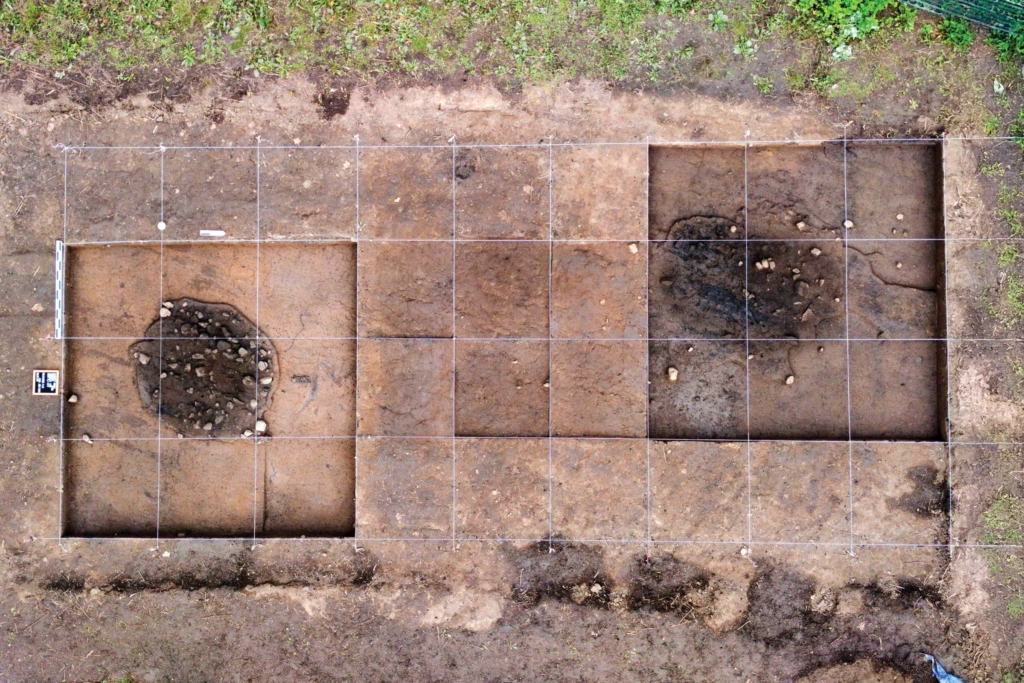
The Summit Metro Parks conservation department protects and manages not only the plants and wildlife within our parks, but the archaeological and historical sites and structures as well. Since 2016, SMP has had archaeologists and historians on staff to oversee our cultural resources. SMP was the first metropolitan park system in Ohio to have permanent staff dedicated to cultural resource management.
While the archaeologists are busy year-round, summers are earmarked for large fieldwork projects at significant sites within the park district. SMP’s cultural resources staff is small, but careful planning and collaboration allows them to tackle larger projects while engaging with community partners and volunteers. This summer marks the sixth year that SMP has partnered with The University of Akron to host their Archaeological Field School class. Here, students learn professional skills and get experience working on an archaeological site.

Since 2021, the Archaeological Field School has taken place at the Everett Knoll Complex Site, which is a large precontact (or prehistoric) site in the Cuyahoga River Valley. The site is on the National Register of Historic Places and dates to the Middle Woodland or “Hopewell” Period (about 100 BCE to 450 CE). The site is very large — over 67 acres — and extends across part of SMP’s Riding Run Conservation Area as well as Cuyahoga Valley National Park property and property owned by private landowners. In the 1850s, a burial mound was discovered on a knoll on the site. Unfortunately, that burial mound was demolished by the construction of a schoolhouse, and the artifacts associated with it are lost. Later archaeological investigation in the 1970s yielded further evidence of the sacred nature of the knoll, uncovering human remains and other ceremonial artifacts*. Indigenous occupation and settlement has been documented at archaeological sites all across the surrounding area, particularly during excavations carried out on National Park Service property throughout the Village of Everett.

On SMP property, the use of archaeological geophysical surveys in late 2023 and early 2024 helped identify possible locations of precontact activity. In 2024, archaeological testing and excavation revealed an “earth oven,” which is a place where food would have been cooked or roasted. This oven is at a surprisingly shallow depth, only a little more than a foot below the surface of the ground. It appears as a circular patch of darkened earth, charred wood and rocks which have been cracked from their exposure to the high heat of cooking. In 2025, the excavation was expanded to study this feature and to reveal a second feature nearby at an even shallower depth. The next step for the archaeological team is to send samples for radiocarbon dating and/or botanical testing. It is hoped that the testing will not only date the archaeological site, but provide insight as to how people were living here and the environment they encountered and shaped so long ago.
While this work takes time, our archaeologists are excited for the chance to eventually discover more information about the past use of the land we now love as Summit Metro Parks. Understanding our past helps us protect, interpret and connect people to the parks in the present day and beyond.

*These items are held at the Cleveland Museum of Natural History, which is currently carrying out the Native American Graves Protection and Repatriation (NAGPRA) process for these artifacts.
For more stories like this, check out Green Islands magazine, a bi-monthly publication from Summit Metro Parks. Summit County residents can sign up to receive the publication at home free of charge.